Quilt batting is one of those things that are invisible when a project is finished and so it’s human nature to deem it of less importance than the front of the project. Just like quilt backing, another so-called “secondary” concern which is actually very important.
We often ask the wrong question, “Why bother spending time on something no one sees?”
Instead of asking, “I want my quilt to be the best it can be, and so I need to know how to use quilt batting to its best effect in my work of art.”
Your quilt sandwich – neat & clean
However, quilt batting matters greatly because it’s that foundation thing again – if you don’t get your foundation right the whole thing goes to rack and ruin very quickly. Quilt backings and battings are MAJOR foundations, so you need to consider your batting choices. And there are a lot of choices out there!
Like everything else in quilting there is no one right answer because quilting is an artistic endeavor and not an exact science – which is very lucky for me since I had no luck with the sciences in school.
How to Make the Best Product Choice when Selecting Quilt Batting
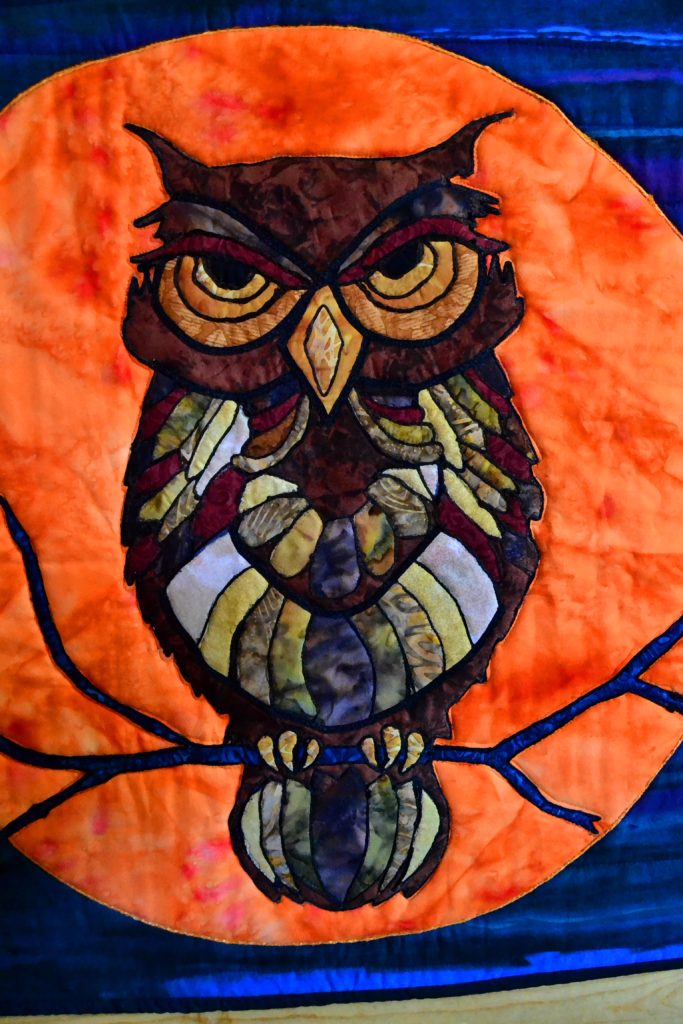
What kind of batting you decide to use in your project depends on the purpose of your project. Here are the purposes I consider. Do you want your finished quilt to be:
- Nicely functional
- A showpiece
- A competition entry
- Decorative or shaped piece
- A gift
- An heirloom
Like everything else in the quilting universe, the choices in battings has expanded exponentially (this is a very big word that I like to use whenever I can to make myself look smart). So let’s have a look at each type and what they can and cannot do.
NOTE:
Here’s a trick that comes in real handy when your project is a bit catawampus or your quilt top doesn’t want to lay flat no matter how much you starch and iron it. To correct this, use 2 layers of batting in your project – I recommend cotton since its lighter. The extra batting helps to take up the extra slack in your quilt top and lays it down flat.
100% man-made polyester quilt batting
There’s nothing ‘natural’ about this option. And to be honest polyester batting has a lot of problems and it’s not my favorite. Which isn’t to say it doesn’t have its proper place in the spectrum of artistic options.
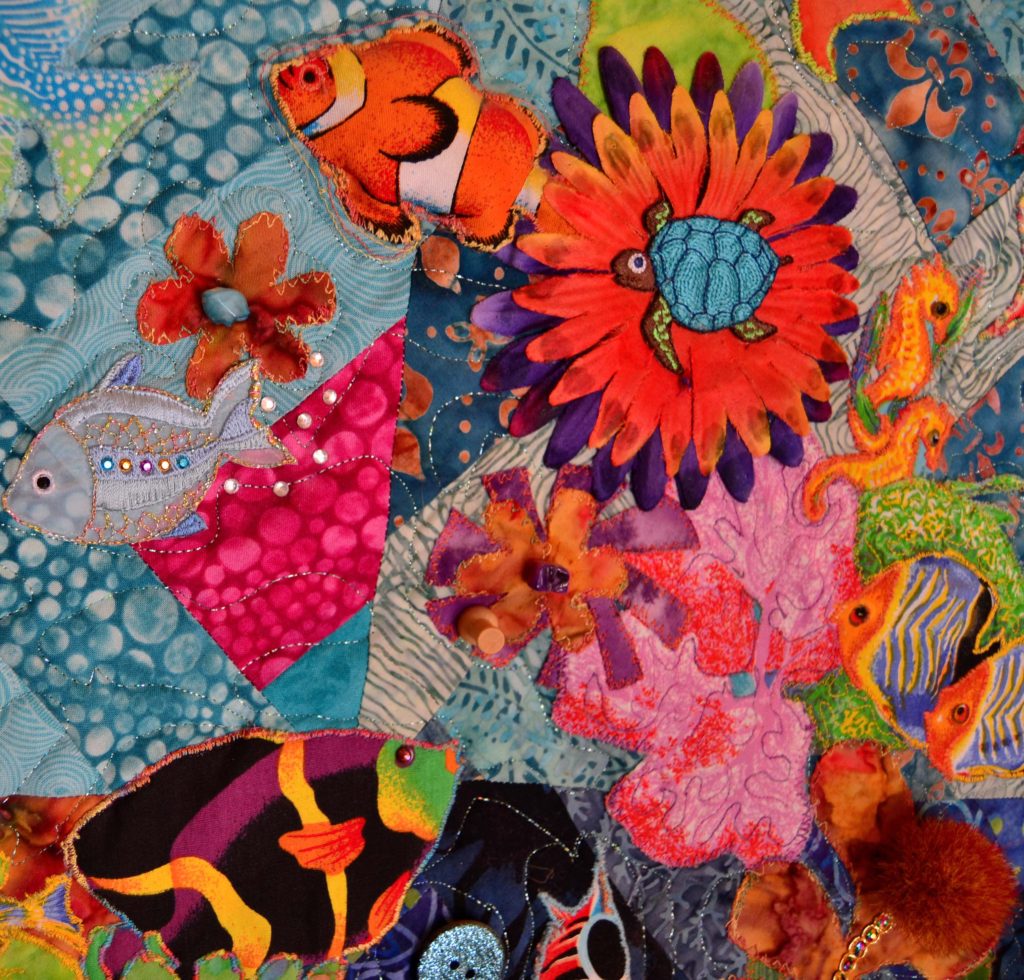
Polyester batting is used only behind the really puffy fish, making them stand out from the flatter cotton quilt batting used for the whole panel. 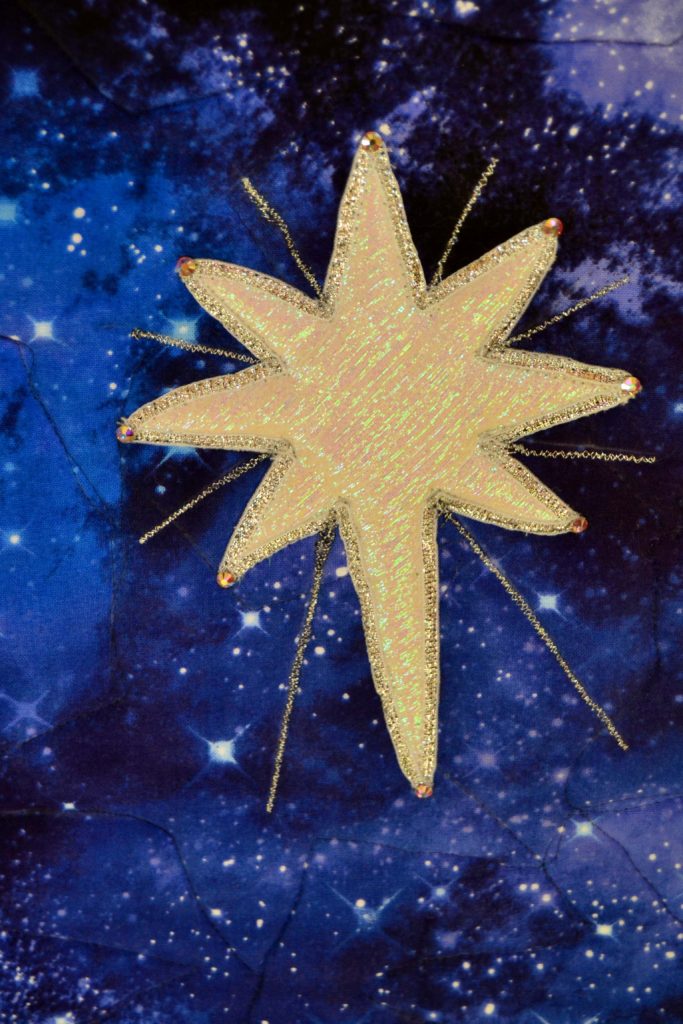
Foam can be used to create the same effect. 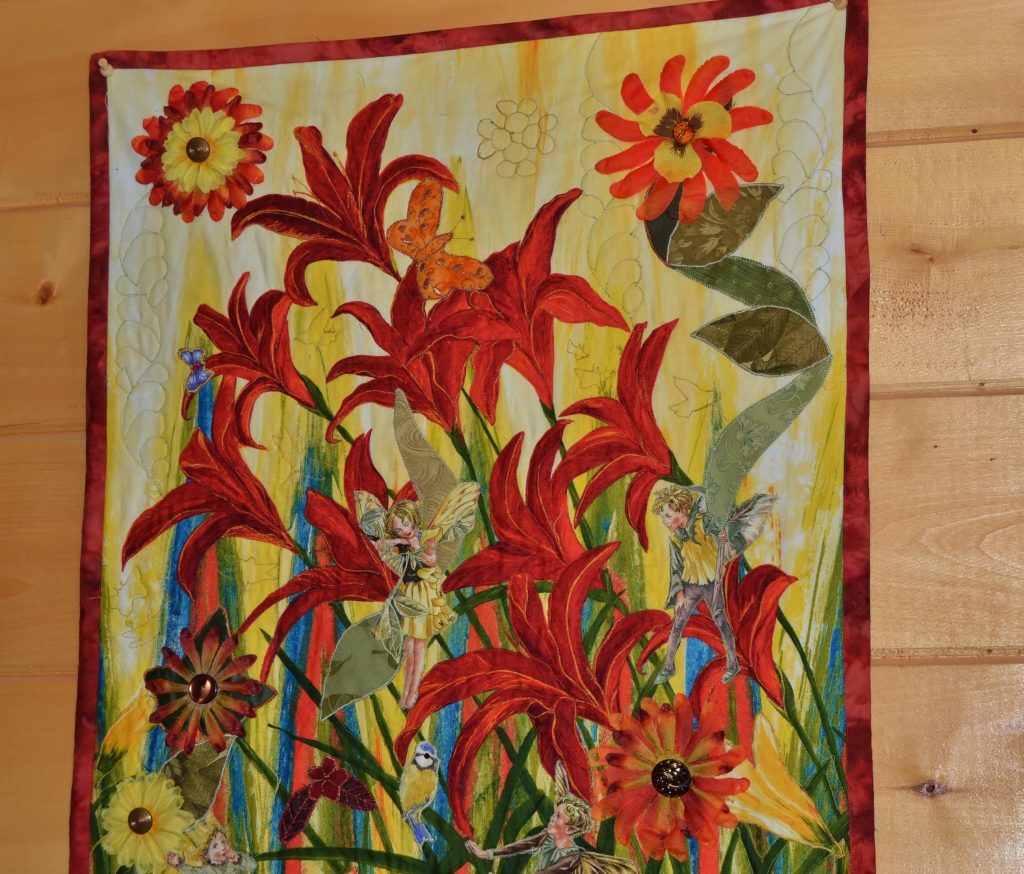
We used polyester batting, carefully cut away from sections of the lilies, to create this incredibly subtle 3D effect
Pros:
- It’s very light – actually the lightest batting available
- Very cost-effective. If cost is an issue for you, then this is the cheapest way to proceed.
- I find this batting a good choice for children’s soft cuddle toys, poufy baby quilts, etc. I keep some on hand to use for ‘Trapunto’ – which is when you put batting behind an applique to make it ‘pop out’ from the rest of the design.
- This batting is also ideal for baby and young children’s quilts because it is so light-weight and yet warm. You don’t have to load your precious little one down with heavy quilts to keep them warm.
Cons:
- Polyester batting can be pulled apart quite easily which means that it has to be quilted much more tightly than other battings so it won’t pull apart inside your quilt and make lumps. This takes more thread and time.
- For want of a better word, polyester batting is fluffy and poofy, even the low-loft stuff which is much flatter than the high-loft batting. This makes it harder to quilt and also makes keeping your quilt surface flat a considerable challenge.
100% Natural Cotton Batting
If the thought of manufactured goods bothered you, and you prefer to keep a connection to natural ingredients than this is probably the most natural choice for you. Most cotton battings are now 100% natural.
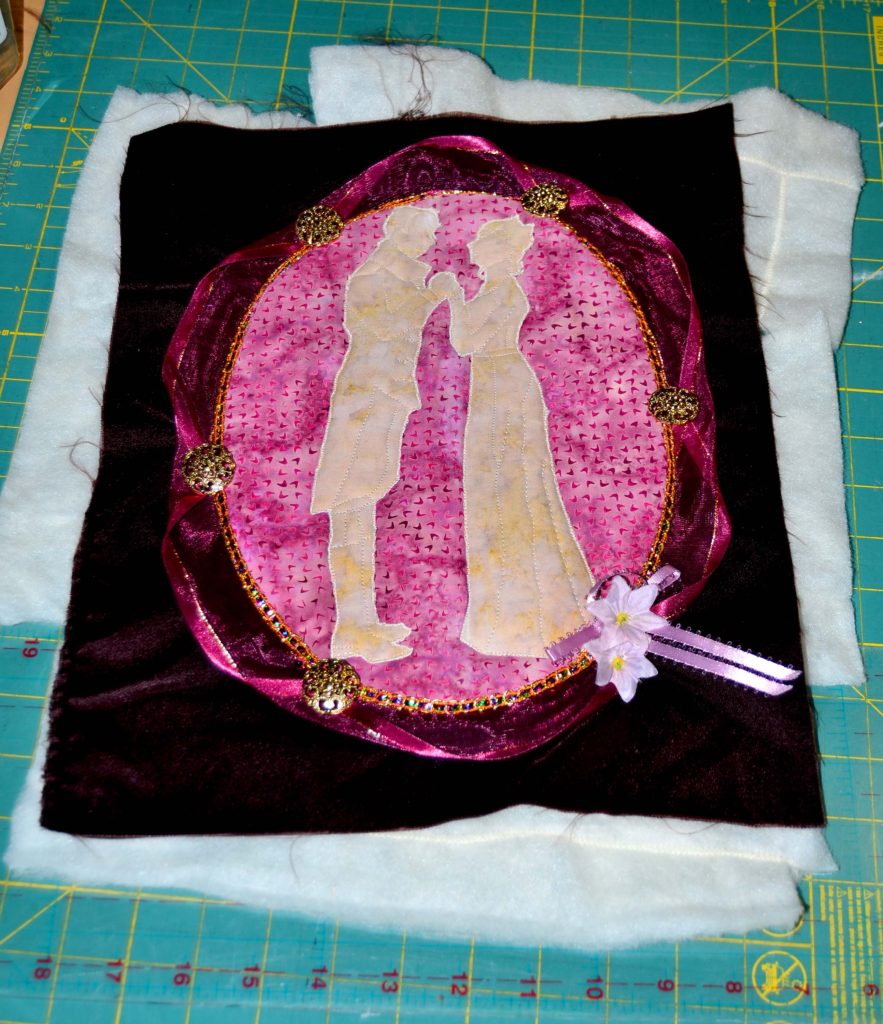
This panel used different layers of different types of batting to create the puffy, full effect 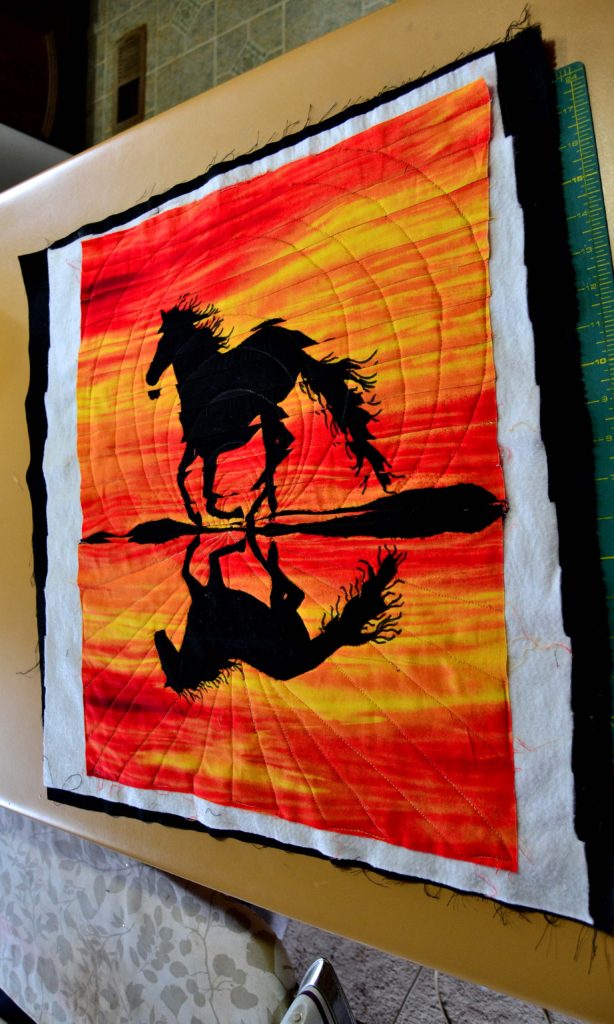
A single layer of thin cotton batting helps keep the focus on this silhouette
I really, really like cotton battings and use them in most of my quilting projects. In my opinion there aren’t that many cons to using cotton, or mostly cotton, battings. Here’s why…
Pros:
- Cotton battings are thin, lay flat, can be easily ironed and are mid-weight which makes them a superior choice for quilts that will be used on beds.
- They are also warm for being so thin. If you have never constructed a full size quilt, you will be amazed at how heavy they can get when all 3 layers are sewn together. The front, batting and backing are not heavy by themselves, yet quilt them together and boy howdy, that sucker gets heavy real fast! This is an important consideration if you’re planning a king or queen quilt and plan on quilting it yourself – the thicker your batting, the heavier the quilt gets – exponentially.
- These battings are much harder to pull apart manually and will not come apart with repeated washing. Therefore, the quilting does not have to be that dense to keep it in place. Most of these battings can be quilted 8” – 10” apart, which cuts down on the amount of thread you use and also the time it takes to quilt your project.
- Because they are lightweight, they work very well for panels that will be displayed on walls because there is very little drag.
- If perchance, your batting piece is not large enough for your project, it is simplicity itself to sew 2 or more pieces together. Just lay the pieces side by side and sew them together with beige thread and a zig-zag stitch. I have seen special joining tape that can be purchased for this purpose, but it’s not necessary.
- Cotton batting will lay flat and straight if you sew the seams with a tight enough stitch.
Cons:
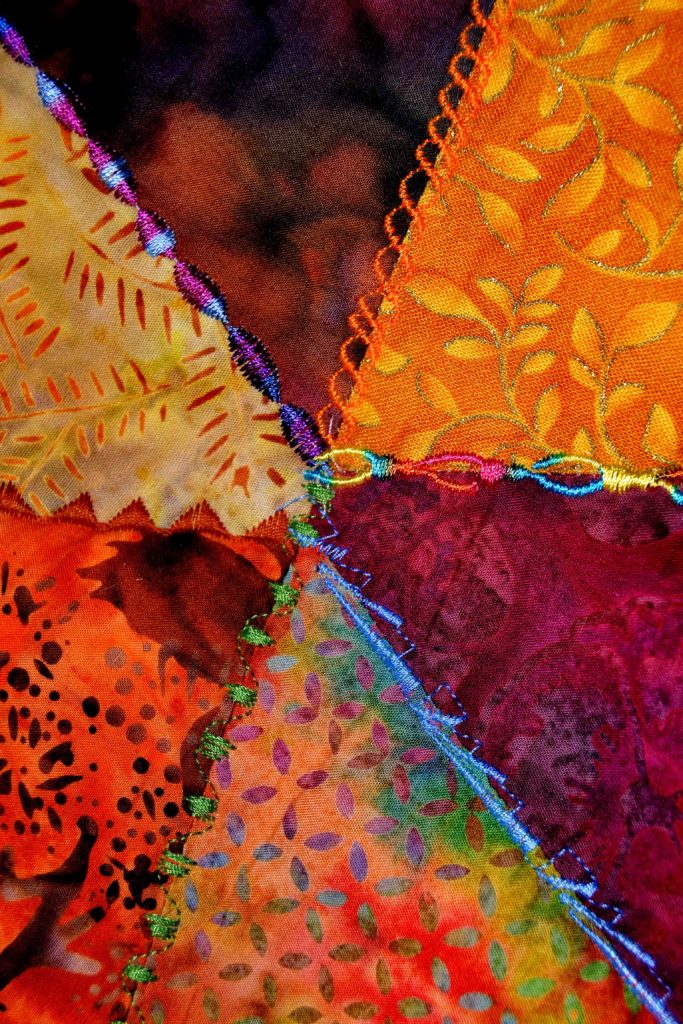
- Cotton quilt batting is more expensive
- Cotton doesn’t have that “cuddly” feeling – so by itself it may not be the best choice for a child’s quilt or a comfort lap quilt.
- Cotton can get too warm really fast. Sometimes a quilt tends to be wonky and have pleats and bubbles. One of the best ways to get around this is to use a double layer of batting to stretch the quilt top – but a double layer of cotton batting can be much too suffocating for a summer quilt.
Another Natural Batting is 100% Wool Batting
I’m not a huge fan of wool quilt batting, but it does exist, and it is, occasionally, a good choice for a great quilt. Since I seldom use it, you may want to take my advice on it with just a little grain of salt.
Pros:
The main usage for wool batting in my world is when I really want to define some aspect of the quilting.
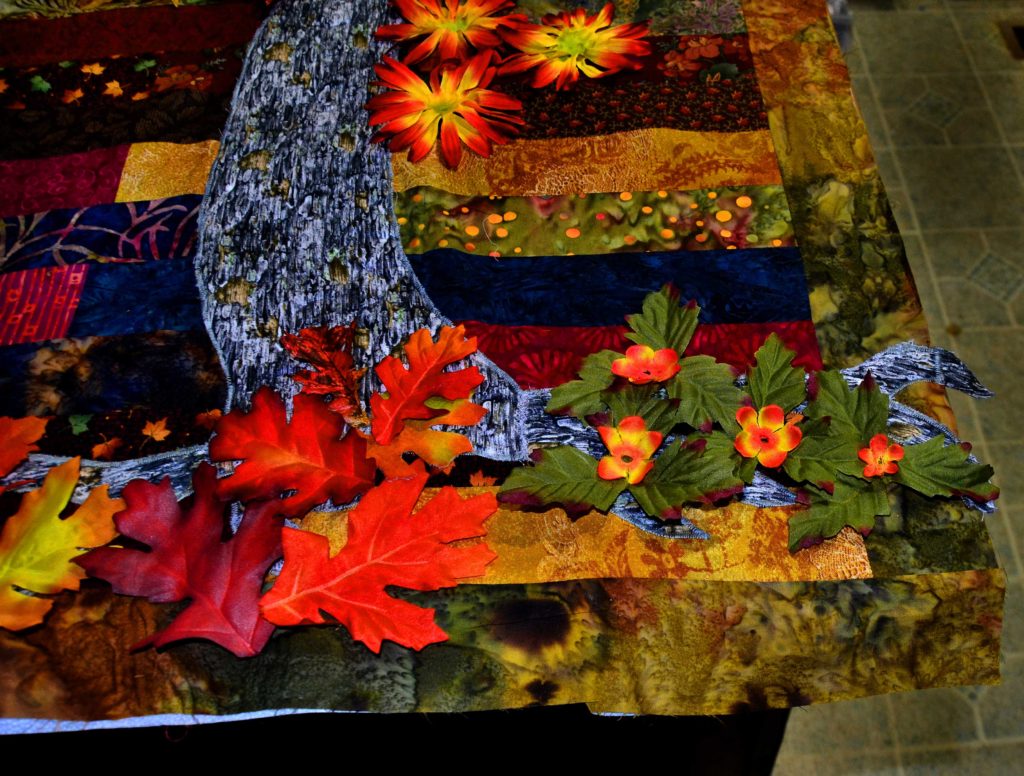
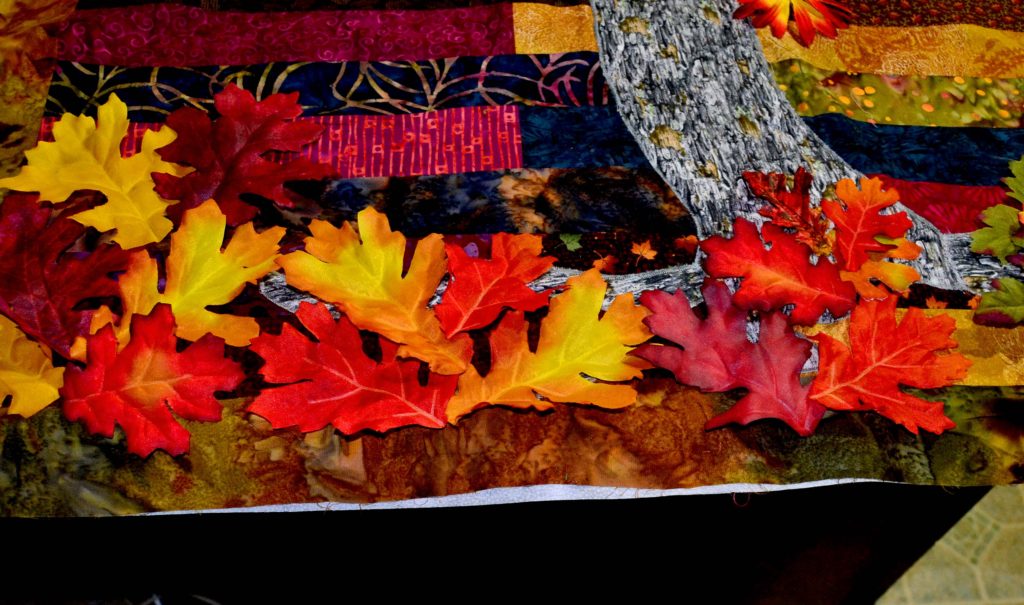
This is what cotton batting looks like, flat and neatly trimmed. I don’t use wool enough to have pics of the effects
Because wool batting is approximately twice as thick as cotton, the quilting lines go in much deeper than with cotton batting. This causes the un-quilted portion of your project to pop up and appear much closer than it is. In effect, it causes a 3-D illusion. I used this technique in my Night Guardian panel. The night sky portion of that panel was quilted with wool batting and therefore appears much closer than it actually is. I also used this same quilting on the background of my dragon panel to help the dragon itself pop off of the panel.
Wool batting, however, does have its good points. One of these is that, like cotton, it is natural so that there is less worry about allergy and health issues.
Wool quilt batting’s also densely constructed, so the quilting doesn’t have to be that heavy.
Also, washing is not a problem – it goes through washers and dryers without pilling, pulling apart, or shrinking.
Cons:
Wool batting, by its very nature is WARM. Very warm. Unless you live in an unheated house, or Antarctica, you may want to re-think using a wool batting in your quilts. They are HOT!
Wool batting is also very heavy. For these reasons I don’t use it in quilts, especially NOT anything larger than a lap quilt. Remember that once you layer all 3 entities of a quilt sandwich together, a quilt gets heavy very fast. If you use wool batting, the weight will become almost unmanageable. I had to have help pulling a quilt sandwich through my machine, and that was just the middle panel of my dragon quilt. Imagine, if you will, the weight of a full-sized quilt!
These are the 3 main types of batting available in quilt stores. The come in different weights, thicknesses, and percentages. The choices seem overwhelming when you look at the shelves and shelves of batting choices.
But my number one recommendation is:
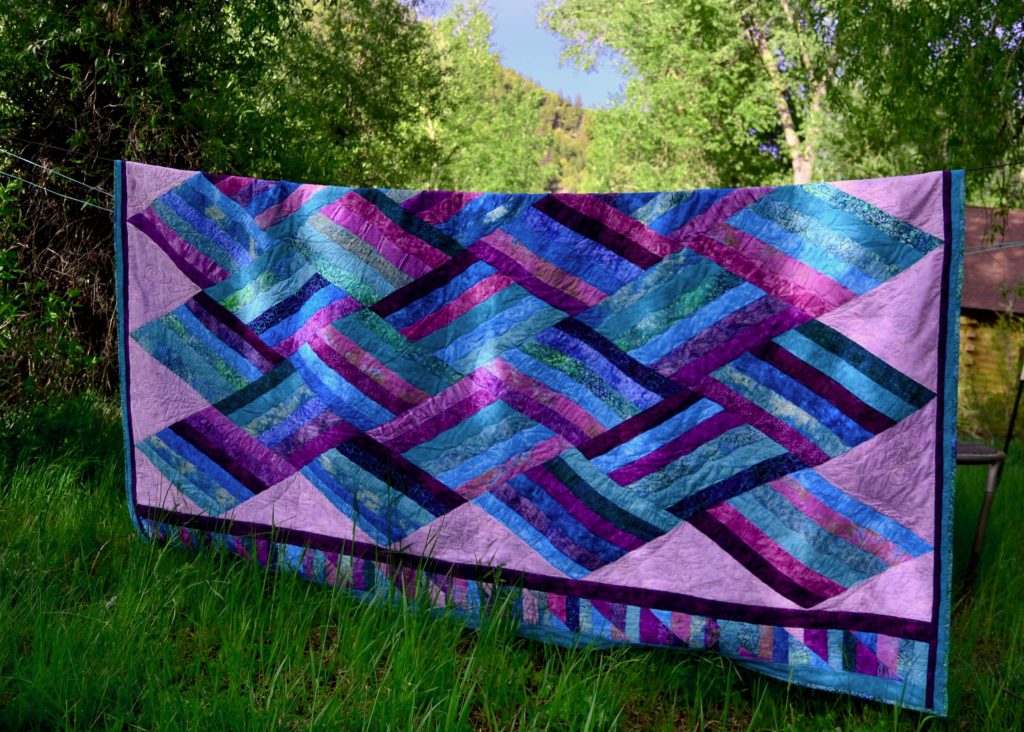
Warm’N’Natural Mostly Cotton Batting
This stuff is amazing. Its 80% cotton, and 20% some man-made fiber I can’t really pronounce. It combines the best of both worlds, and is warm but much lighter than any other option.
You can double-down on it without causing your house to sink into its foundation, and you can also use it in combination with wool or polyester quilt battings when you’re going for poufy applique techniques.
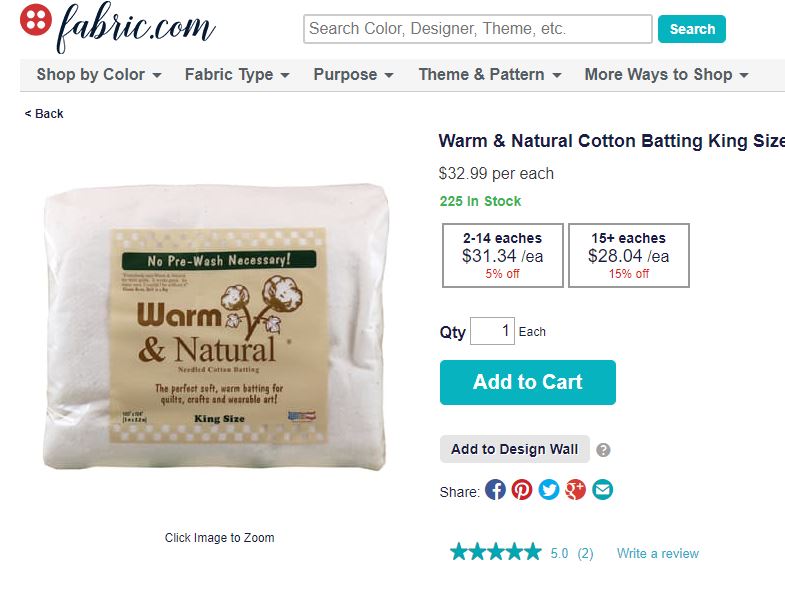
You’ll find warm’n’natural quilt batting in most of my quilts and wall hangings from the last ten years, and I’ll stand by its use in 97% of quilting situations.
It’s also fairly well-priced on one of our favorite money-saving sites, Fabric.com. Here you can get a King-sized package and – unless you’re making a king-sized quilt – it’ll last at least a couple of months.
My final recommendation is to use warm’n’natural mostly – but if you want or need to use a different quilt batting for some reason, here’s Princess YellowBelly Design’s final word.
Match-Up of Desired Finish to Functionality
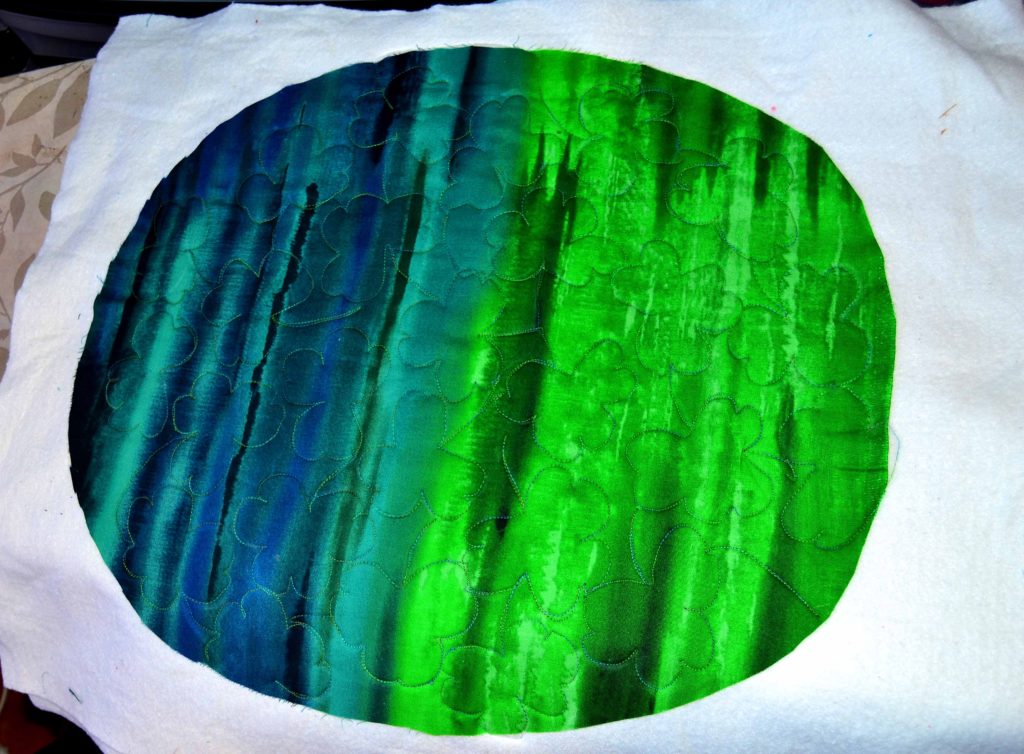
Most quilt battings can be layered 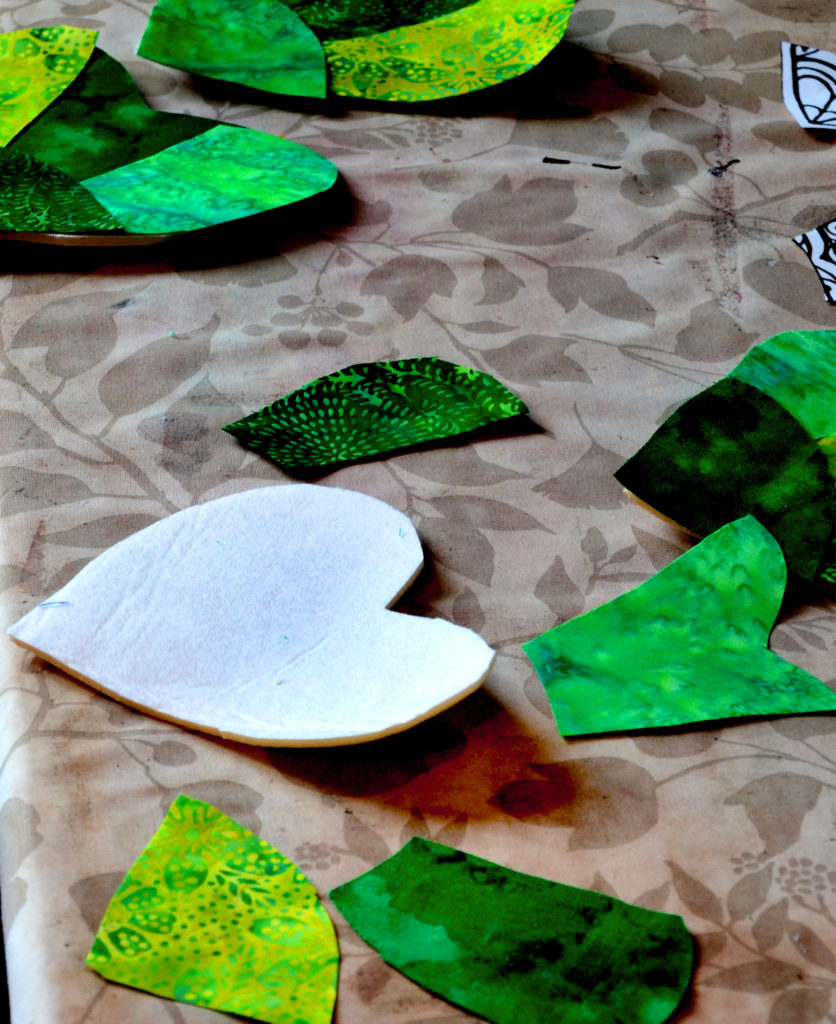
Foam works great with batting 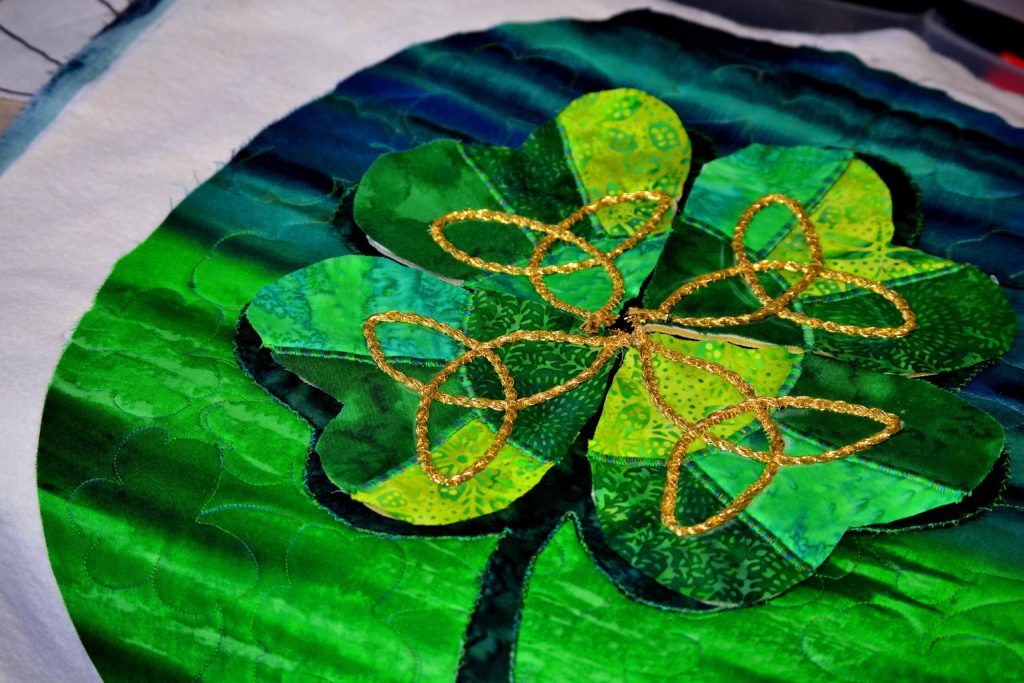
And you can achieve this effect – easy, beautiful, and in-depth
- Functionality – Cotton batting either 100% natural or a blend – it really doesn’t matter.
- Showpiece – If it’s small enough and you really want to create a 3-D effect use 100% wool batting. If it’s larger use cotton. Sometimes, I’ll use 2 layers of cotton batting so that I get the 3-D effect without the weight.
- Competition – If you’re entering your work to be judged, then use the best batting you can afford and get it professionally quilted. Weight doesn’t matter so much in this instance, but quality does.
- Decorative – Use cotton batting and quilt thoroughly – you don’t want it to lose its shaped and definition while it’s hanging.
- Gifts – Depends on size and function but use the best batting you can afford so that the gift will endure.
- Heirlooms – This is where quality is the most obvious. If you are planning for your projects to be passed down to future generations, you have to use the best quality materials available and this includes your batting. I would recommend warm’n’natural, of course, but if not then you should go for 100% cotton at the highest quality available.
Purchasing Batting
Like everything else you need to consider your needs and shop around.
Packaged quilt batting comes in specific sizes – twin, queen, king, etc. If you are only going to be sewing one project then buying a pre-packaged size is the cheapest way to go. There will be little waste.
Also, if you’re purchasing online, then this is the cheapest option to ship.
However, if, like me, you sew constantly, and – unlike me you live close to a JoAnn’s Fabric store – then I would recommend buying your batting by the yard from rolls. And when I say yard it’s not a 45” wide yard like it is for fabric, but a 90” yard.
Especially if you have a bulk coupon it’s much, much cheaper this way too, and art stores carry a lot of different brands to boot.
When all of your materials work together right…you have created art!
A Final Note of Caution
I have seen packaged batting that is made from 100% recyclable materials.
Now, I like recycling and saving the environment as much as the next quilter, but I can’t help it…I’m EXTREMELY leery of these.
My thinking is this…whatever they were recycled from you can bet it was chemically constructed, manmade, and unnatural. Then they recycle it with more chemicals and reconstruct it with even more processing and chemicals.
This is certainly not something I want to put close to my face in a bed quilt – especially for babies or young children – or in a heirloom quilt will it start to break down after 10-20 years? I would urge caution if you want to go in this direction and start with something small.

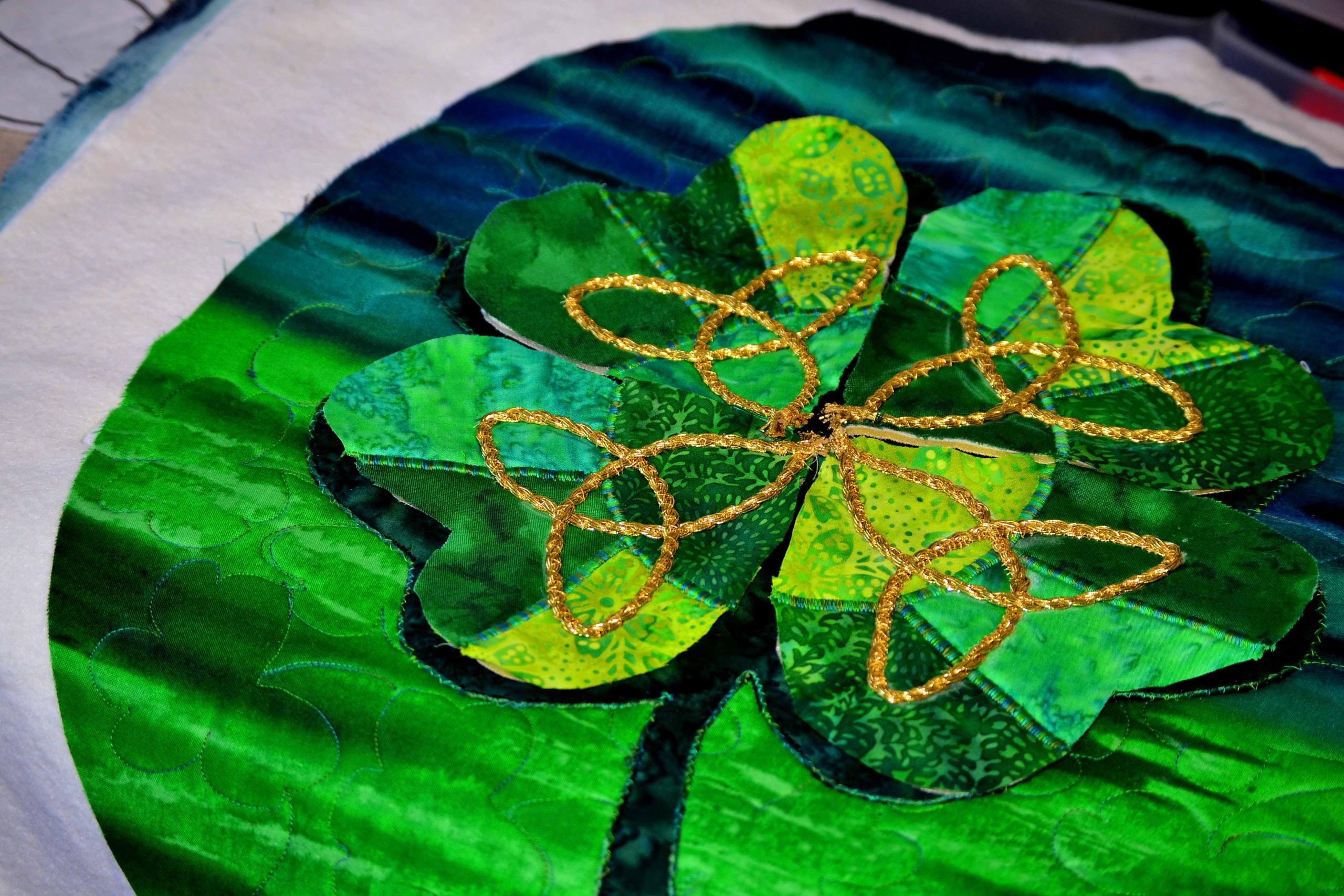
Hey There. I found your blog using msn. This is an extremely well written article.
I will make sure to bookmark it and return to read more of your
useful information. Thanks for the post. I’ll
definitely return.
I think this is among the most important information for me.
And i’m glad reading your article. But want to remark on some general things,
The site style is great, the articles is really nice : D.
Good job, cheers